When it comes to preparing your hydrangeas for winter, how you care for your hydrangeas in the fall can have a big impact on not only their health and winter survival, but their ability to bloom next year as well.
Although they are one of the most beautiful blooming shrubs of all, hydrangeas are also one of the most confusing of all perennials for gardeners. Especially when it comes to fall care! After all, long after their blooms have unfurled, they can still look amazingly beautiful drying on the plant.
But what do you do with them as the weather starts turning cooler? Is it okay to prune hydrangeas back in the fall? Do they need to be fertilized before winter to help them next spring? And what about mulching and watering – do they need that in the fall as well?
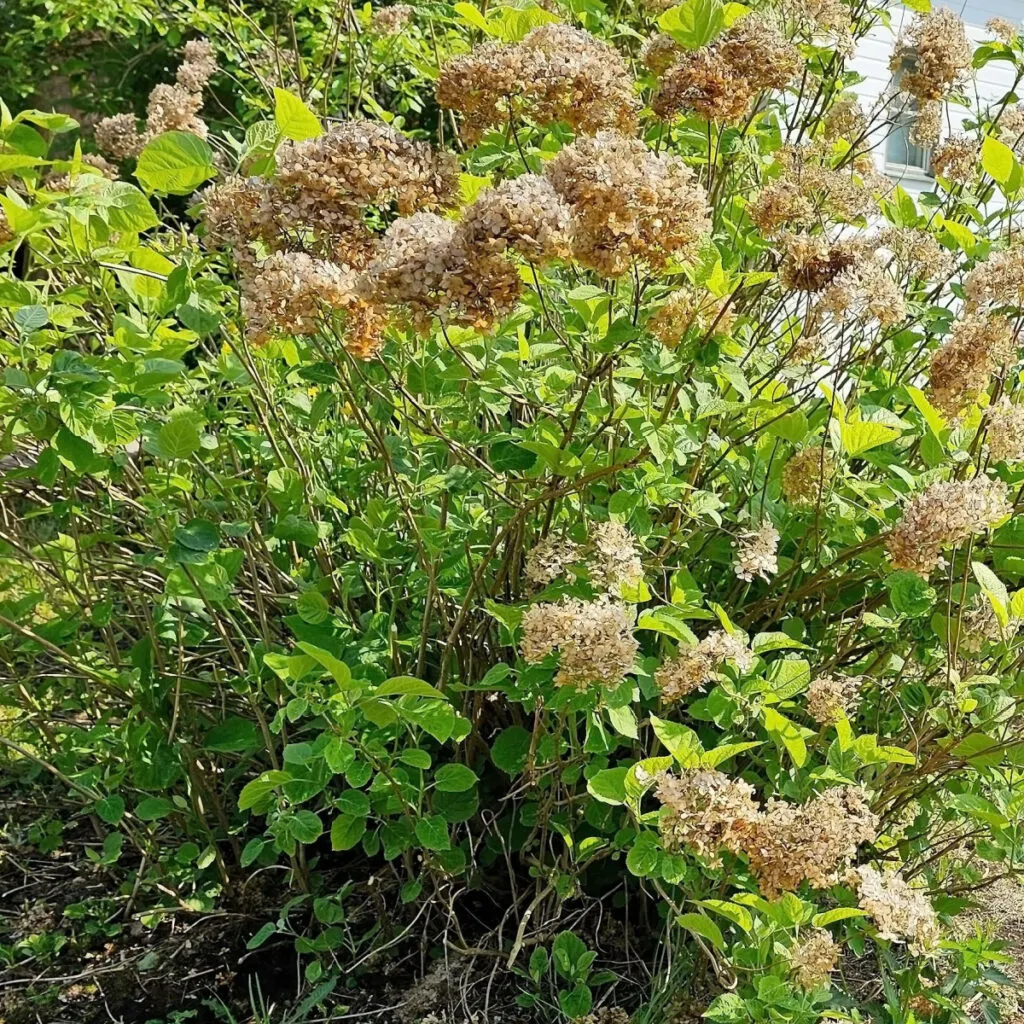
All of those question and more roll off the tongues of gardeners each and every fall. And for good reason. How you care for your hydrangeas before winter arrives plays an amazingly important role in both their survival and blooming performance the following season. In fact, more than you can ever imagine!
The Importance Of Proper Fall Care – What To Do With Hydrangeas Before Winter
When hydrangeas fail to bloom during a growing season, the issue can almost always be traced back to fall care. And not just a lack of care – but sometimes too much. Yes, how you mulch, water and fertilize will play a key role in the plant’s success – but it’s pruning that usually makes or breaks it.
Although fall pruning is a annual ritual for a large majority of perennials, with many varieties of hydrangeas, it can result in a total loss of future blooms. As can fertilizing or failing to keep the bush hydrated.
That is exactly why before performing any fall maintenance on your hydrangeas, the first step to success is knowing exactly what type of hydrangea you are growing. And then from there – taking the proper steps to get your bush not just ready for winter – but for blooming bigger than ever next year!
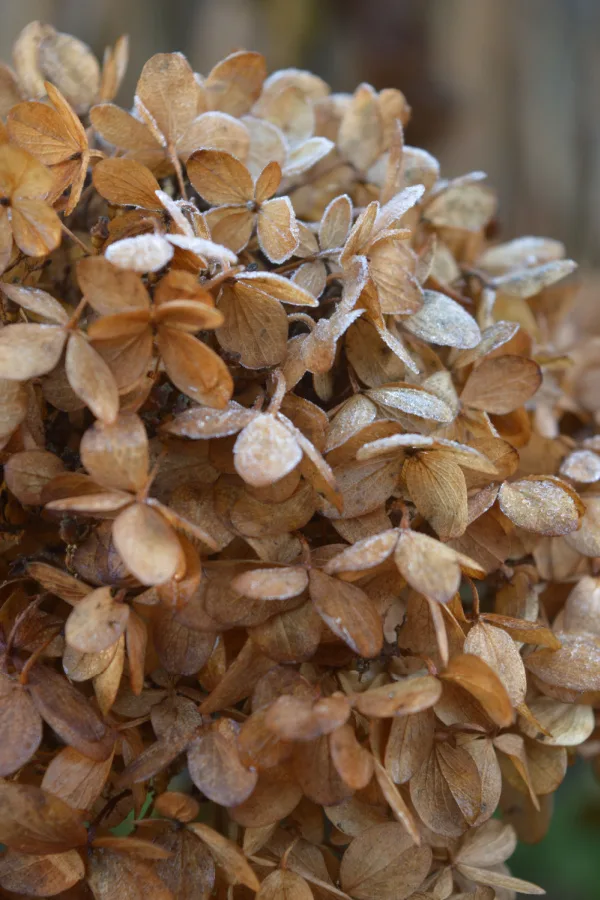
Fall Hydrangea Care 101
How To Know What Type Of Hydrangea You Have
When it comes to hydrangeas, there are two major categories when it comes to bloom cycles. One group of hydrangeas blooms in early to mid summer, while the other group blooms in late summer to early fall. And when it comes to fall maintenance – the two need to be treated entirely different. That is exactly why it’s important to know which type you have!
Summer blooming hydrangeas include Bigleaf hydrangeas and Oakleaf Hydrangeas. Bigleaf varieties include the ever-popular massive mophead blooms, These oversized flowers can light up the landscape in early summer with their huge blooms, seemingly covering the bush in color.
Oakleaf varieties bloom in the summer as well and can flower as early as June. Oakleaf flowers are not quite as showy, but their clusters of flowers that form on cone-shaped blooms can still provide quite the floral display during the summer months.
Late summer / early fall blooming varieties include Panicle and Smooth hydrangeas. Panicle hydrangeas produce their flowers in a cone shape. They will begin to flower late in the summer. In the fall, their blooms then turn to stunning deep colors as they dry.
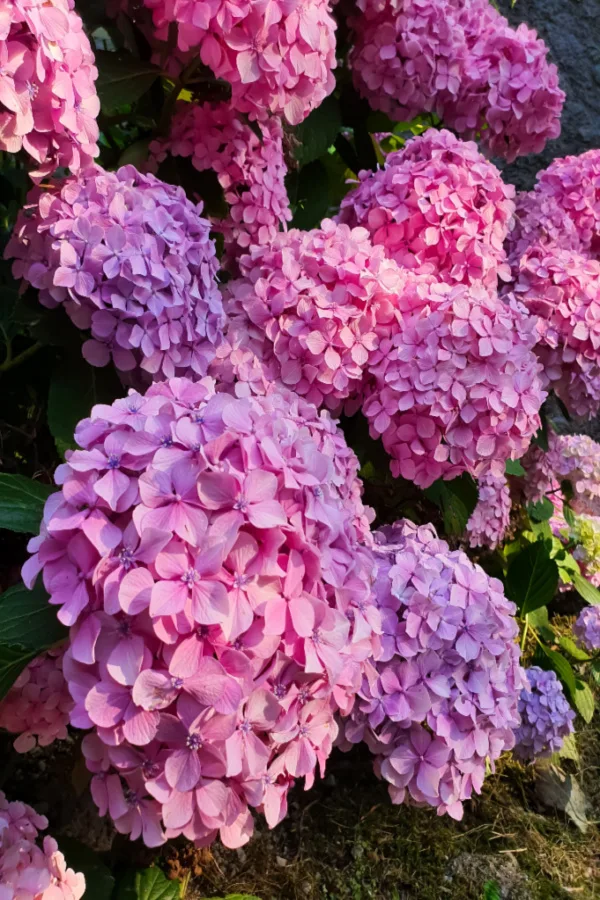
Smooth varieties (often called wild hydrangeas) have larger more rounded blooms. They come into bloom in late summer as well and age gracefully all the way into late fall.
To Prune Or Not To Prune – Fall Hydrangea Care
So why does knowing what type you have matter? Because depending on the type you grow, if you prune them at the wrong time, you risk pruning off the next set of blooms!
Fall Care For Summer Blooming Hydrangeas – Fall Hydrangea Care
Summer blooming hydrangeas flower on old wood. Old wood is the growth that occurs on a hydrangea after it finishes blooming in the summer. That is extremely important when it comes to fall care, because if you prune summer blooming hydrangeas in the fall, you are pruning off the following year’s blooms.
The only time summer blooming hydrangeas should be pruned is right after they bloom. This allows the plant to still grow the new wood for the following season’s flowers. If you missed this opportunity, it’s important to let any major pruning go until the following year.

Although you can’t prune summer blooming hydrangeas in the fall, the one thing you can do is deadhead the flowers before winter arrives. Deadheading is the practice of removing the aged blooms from a plant. And for summer blooming hydrangeas, it can help the plant conserve valuable energy for winter – and for next year’s bloom set!
By deadheading the spent blooms, the perennial can instead direct it’s resources to storing energy in its roots. Unfortunately, as long as you allow the old blooms to hang on the plant, the bush will continue to pour energy into the flower to help it develop seeds. And that’s energy that should be going to next year’s blooms!
When deadheading summer blooming hydrangeas, it is important to only remove the bloom and nothing more. Simply snip off the stem right below the flower head. This will allow all other growth to remain. Growth that most likely holds next year’s blooms.
Fall Care For Fall Blooming Hydrangeas – What To Do With Hydrangeas Before Winter!
Unlike their early summer flowering counterparts, late summer/fall blooming hydrangeas bloom on new wood. New wood is the growth that occurs on the bush during the same season. More precisely, it is the growth that occurs on the bush from spring until it flowers in late summer or early fall.
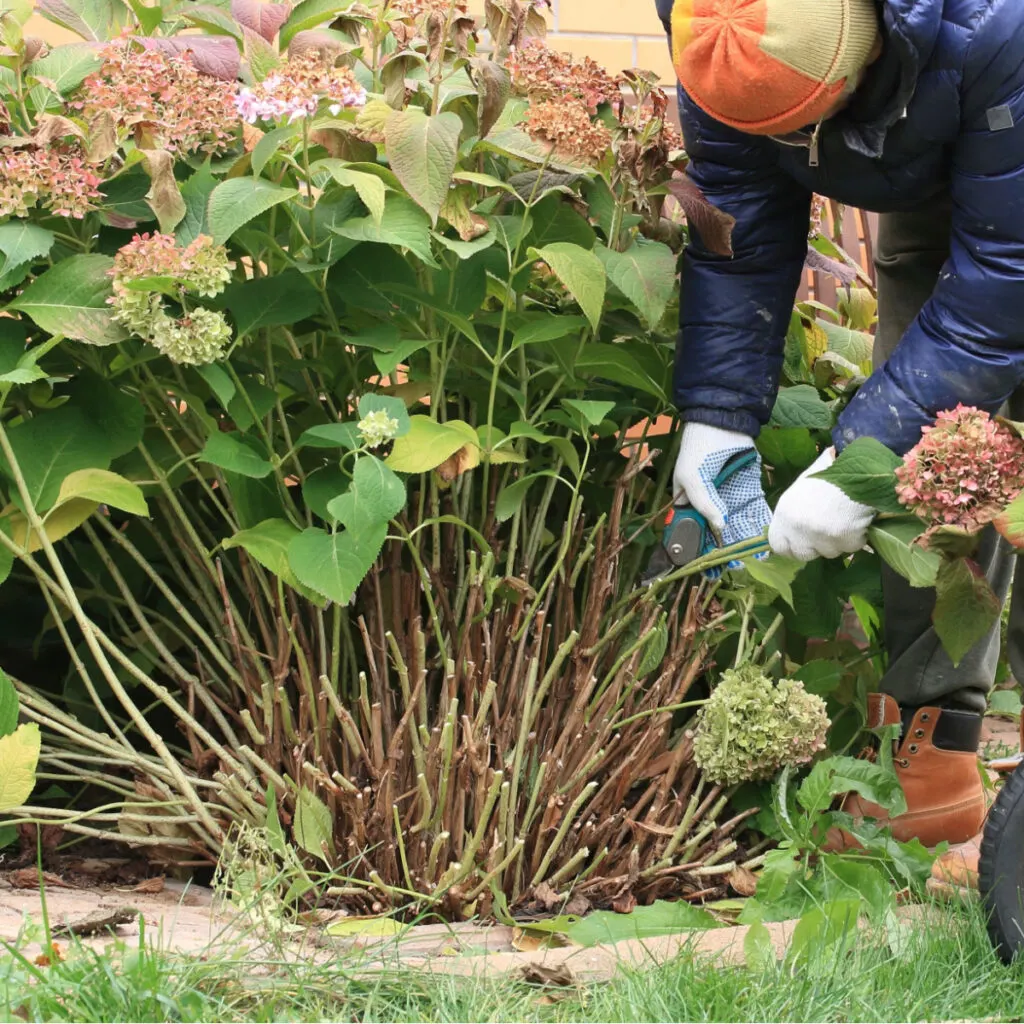
For these varieties, not only is fall deadheading important, so is pruning them back for shape. By pruning in the fall, you remove the spent flowers to help the plant conserve energy. But you can also remove overgrown branches and trim the plant back to size – all without worry of hurting next year’s bloom cycle.
One thing is for sure, no matter which variety you grow, the single biggest thing you can do to help your hydrangea before winter is to remove the spent blooms – no matter the variety!
Watering, Fertilizing & Mulch – Fall Hydrangea Care
Above and beyond pruning, watering and mulching your plants in the fall is vital for their well being and protection.
Whether you grow summer or fall blooming hydrangeas, it’s important to keep your plants hydrated and protected before winter settles in. Hydrangeas need water at their root level to help keep roots productive and store energy for next year’s blooms.
On average, hydrangea bushes should be getting an inch of rain or water per week. If allowed to get to dry in the late fall months, a lack of water will cause a reduction in the following year’s blooms.
Mulching your bushes in the fall before winter helps greatly to retain valuable moisture in the soil. It also helps keep competing weeds away. Even more, mulch also helps insulate the roots from the constant freezing and thawing winter can bring.
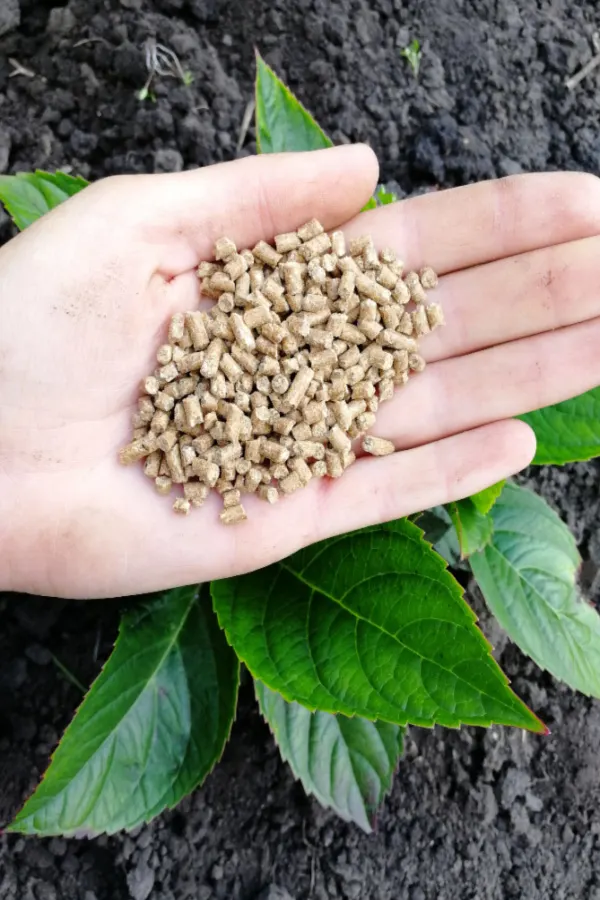
In mid to late fall, a four to six inch layer of shredded hardwood bark or shredded leaves spread around the base and drip line edge of your hydrangeas is more than enough to do the job. The drip line is simply where the edge of the bush grows to. By mulching to this point, you keep the entire root structure protected.
Fertilizing Hydrangeas – Fall Hydrangea Care
Last but not least, when it comes to fertilizing – fall is not the time to give your hydrangeas power! Fall fertilizing can actually harm the shrub by causing unwanted late growth. Unfortunately, late growth is weak and tender, and highly susceptible to winter damage.
Instead, save fertilizing for early spring and summer to help promote same season blooms and growth. Here is to giving your hydrangeas the proper fall care this year – and getting them ready for an explosion of flower power next year!
For more info on growing and maintaining perennials in the landscape, check out our Perennials section on the website.
Follow Our Facebook Page For Great Gardening Tips And Advice! This Is My Garden Facebook Page
This Is My Garden is a garden website created by gardeners, for gardeners. Jim and Mary Competti have been writing gardening, DIY and recipe articles and books and speaking for over 15 years from their 46 acre Ohio farm. They publish three articles every week, 52 weeks a year. Sign up today to follow via email, or follow along!
